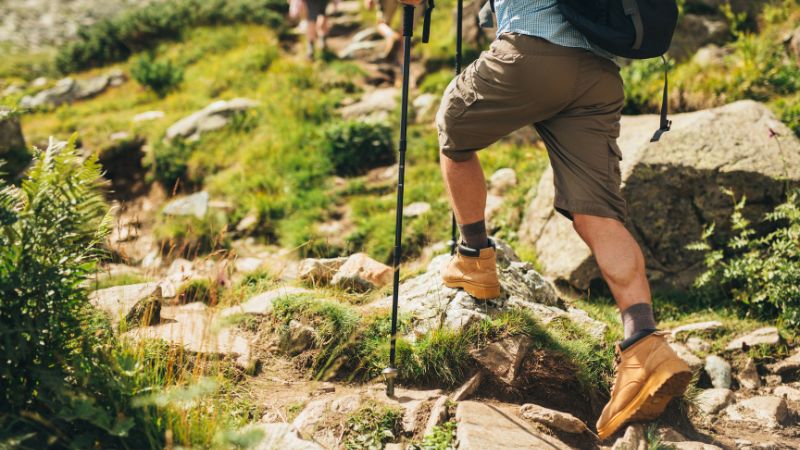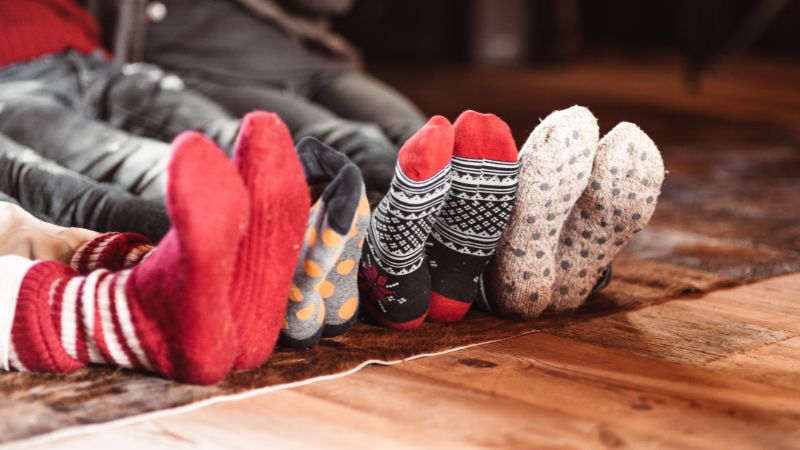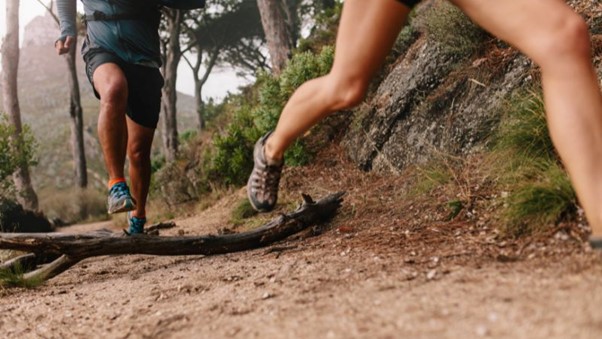Did you know that an average human being walks an estimated 128,000 kilometers (79,535 miles) in a lifetime? Australia’s Sanders Podiatry Clinics explains what this means: “the equivalent of [walking] three times around the world.”
If this is indeed the distance your feet will walk over your lifetime, isn’t it evident that they need to be given the caring attention they deserve?
The good news is that there is a lot you can do to care for your feet. Thanks to modern technology, one can now buy socks with fibers that can wick away sweat. This ensures that your feet remain dry and don’t become blistered or create a breeding ground for bacteria that could cause different health conditions.
This article presents 17 tips to help you take better care of your feet and keep them healthy. It begins by focusing on why proper foot care is important, common foot problems, and the contribution of a good pair of socks to feet health.
Why Feet Health is Important
Southeast Orthopedic Specialists, an organization that focuses on musculoskeletal care (care related to muscles, tendons, ligaments, or bones), identified three critical reasons for taking care of your feet: “quality of life, productive work, and regular physical activity.”
The same organization elaborates by noting that an individual’s quality of life is linked to self-sufficiency. If foot problems make it a challenge to accomplish everyday tasks, a person cannot function at their best.
Poor foot health could impede your productivity at work. Because your feet play an essential role in physical exercise, poor foot health could expose you to other conditions related to a sedentary lifestyle like high blood pressure, obesity, and diabetes.
Common Foot Problems
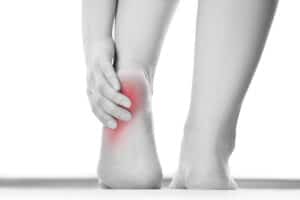
To deal with foot problems that may affect your quality of life, productivity, and physical activity, it’s vital to look at some of the most common foot problems.
EverydayHealth.com, ClevelandClinic.com, and VeryWellHealth.com identify some common foot problems to watch out for:
- Athlete’s Foot: Is caused by a fungus that thrives in warm, moist places such as public locker rooms and showers. It usually affects the area in-between the toes.
- Blisters: Often result when there is friction between the feet and shoes.
- Corns and Calluses: This is usually a result of wearing shoes that don’t fit properly, where there is constant rubbing between shoes and a foot’s bony area.
- Ingrown Toenails: This is another problem related to wearing shoes that don’t fit properly or cutting your toenails too short.
- Toenail Fungus: Could be caused by improper pedicure techniques, repeated trauma caused by physical activity like running, or wearing ill-fitting shoes.
- Plantar Fasciitis: Is symptomized by pain at the bottom of the heel when carrying a heavy weight, which worsens after rest.
- Bunions: This indicates that the big toe’s bone or tissue is out of place and becomes unstable due to genetics, walking style, or shoe type.
- Plantar Warts: According to the Cleveland Clinic, this condition is “caused by a viral skin infection that occurs on the outer layer of skin on the soles of the feet.”
The Contribution of Quality Socks to Good Feet Health
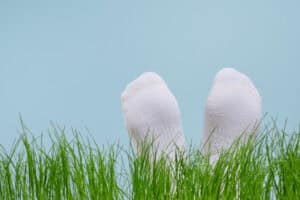
It’s clear that there are numerous foot problems, but the good news is that many of them can be prevented by following simple steps like wearing the correct type of socks and ensuring that they are always clean.
How do quality socks contribute to good foot health?
The Foot Health Center has the answer: “Socks are used for more than just padding and cushioning; they serve as a barrier between the shoes and the feet.”
The same organization adds, “A good pair of socks can help absorb some of the pounding suffered by feet and ankles, reduce soreness following physical activities, and prevent foot conditions like calluses, blisters, and fungal infection.”
Therefore, the first line of defense when it comes to foot health is a good pair of socks.
Tips To Keep Your Feet Healthy

Now that you know why you need to keep your feet healthy, look at these handy tips provided by Harvard Health Publishing, WebMD.com, HealthLine.com, and WomensHealthMag.com on how you can go about this:
- Check your feet every day: The Centers for Disease Control and Prevention advises, “Check your feet every day for cuts, redness, swelling, sores, blisters, corns, calluses, or any other change to the skin or nails. Use a mirror if you can’t see the bottom of your feet, or ask a family member to help.”
- Keep your feet clean and dry: Your feet deserve the same attention as all the other parts of your body. Try to cut your toenails regularly and ensure that your feet are completely dry before wearing your socks and shoes.
- Get rid of odor: Primarily, foot odor can be eliminated by wearing clean socks and never repeating them. However, your shoes should be clean and dry.
- Moisturize: As you age, the skin around your feet tends to get dry because it becomes thinner, which could result in feet cracking and bleeding, causing pain. You can avoid this by rubbing lotion or oil on your feet after showering.
- Avoid tight shoes: No matter what you do, you should always ensure that your shoes fit comfortably. Tight-fitting shoes interfere with blood flow to the feet. It also restricts your feet from breathing. So, they retain moisture and become a breeding ground for viruses.
- Do not share shoes: Sharing shoes is akin to sharing foot problems. Since it’s not always easy to tell whether someone has a foot disease or not, you should avoid borrowing someone else’s shoes or buying second-hand shoes.
- Rotate shoes: After wearing a pair of shoes, give them enough time to air out and dry to prevent odors and infections. Therefore, it’s vital to rotate shoes.
- Don’t hide ugly nails with polish: Ugly nails are often a symptom of foot disease. That’s why you should never try to solve the problem by hiding it under nail polish. See a foot specialist to determine the root cause. If you do, you will never need to hide it with nail polish.
- Get a foot massage: A foot massage stimulates muscles, improves blood circulation, reduces tension, and alleviates pain. It can also be an excellent opportunity to have someone else check your feet for any problems.
- Roll a tennis ball under your feet: Not everyone can afford a foot massage every once in a while. Rolling a tennis ball under your feet can help loosen up the muscles.
- Exercise your feet: Accordingto Healthline.com, “Keeping your feet strong and flexible can help reduce foot and ankle pain, reduce muscle soreness, improve your overall foot health, and keep you active.” The same source adds, “Exercises that improve range of motion and help limber up your feet, may reduce your chances of getting hurt.”
- Stretch your feet: Stretching any part of the body ensures that your muscles remain strong, healthy, and flexible. Because feet play a central role in mobility, they need to be as flexible as possible; otherwise, they will become tight as the muscles get shorter.
- Maintain a healthy weight: When you are overweight, your feet are under tremendous pressure when walking or standing. Added to this, being overweight increases the risk of conditions like poor blood circulation, which often results in swollen and painful feet.
- Have a pumice stone in your shower: A pumice stone can be extremely useful for removing dead cells from your feet. You can get one from most supermarkets, pharmacies, or health stores. It’s vital to ensure that you apply appropriate pressure when using the stone so you don’t end up hurting yourself.
- Eat foot-friendly food: Avoid foods that may lead to conditions like obesity or being overweight such as over-processed carbohydrates and foods containing too much salt. Include more vegetables, fruits, and water in your meals.
- Buy the proper socks for your activity: A proper pair of socks ensures that your feet can breathe inside the shoe. Thus, you need socks that keep the feet dry and able to move freely depending on the activity you are doing.
- Seek treatment: MoyoClinic.org suggeststhat you seek treatment when you have swelling or severe pain, a wound oozing pus, or symptoms of infection such as tenderness, warmth, or redness. If you have diabetes and a wound on your feet is not healing, it’s also advisable to see a doctor.
Take a Holistic View of Healthy
Even though this article is mainly about foot care, it’s vital to remember that being healthy is not achieved by focusing on only one area of the body. This approach recognizes that simply treating symptoms won’t heal your health conditions.
Writing for Huffpost.com, Lucinda Honeycutt provides an excellent illustration of how to look at foot health holistically. She writes, “It’s no surprise that after you spend days limping because you hurt your ankle, your other foot may start to hurt. It’s picking up the slack and carrying all of the weight instead of just its usual half share.”
This shows that everything is interconnected, and when one part of the body is not well, it will affect the others. Therefore, you need to see your feet as part of a whole body that should be maintained in a healthy condition.

